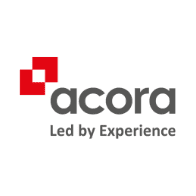There is still a lot of confusion surrounding the different types of IT support models, mainly because there are so many options and alternatives to in-house IT service desks out there!
We thought we would explain the different types of sourcing solutions available, including near-shoring, co-sourcing and managed sourcing.
IT Sourcing Models
Generally, when certain business functions or operations are performed and managed by an external party, it is called outsourcing. In the case of IT support, many things can be outsourced; from the help desk to software development, to a small part of IT, to all of it.
We normally define full IT outsourcing as the practice of having an external provider take care of all IT support functions and operations, where staff, hardware and software are often (but not always) based at the provider’s site. This could be in another country, taking the form of near-shoring (within the same continent) or off-shoring (overseas).
A different approach is to keep the infrastructure in-house and only outsource management and staffing to an external partner – totally, or in part. When the IT department is managed by a service provider, you have a managed service. If only some staff members are managed by an external provider, where different service providers coexist in the same environment to keep competition high, it is called a co-sourced environment.
Reasons for IT outsourcing
Why do people use outsourcing and managed services for their IT? Well, there are many different reasons. A KPMG report entitled ‘UK Service Provider Performance and Satisfaction’ shows how the drivers for outsourcing are constantly changing. A couple of years ago the main drivers were financial – ‘cost savings’ for 83% of respondents, and ‘financial flexibility’ for 41%.
However, there is now a shift towards a more holistic and strategic view of this practice. Whilst ‘cost savings’ remains high at 70%, it is now followed by ‘access to skills’ for 51% and ‘quality improvement’ for 46% of respondents. From these statistics, you can see that having access to the skills and expertise unavailable in in-house teams is an increasing driver for outsourcing IT support functions. So is having a predictable monthly cost and control over service quality through Service Level Agreements (SLAs). All of which contribute towards service desk cost-efficiency.
Choosing the right model
Each organisation has different requirements, and their IT support, therefore, needs to be personalised for maximum success. A pure model – full IT outsourcing or a fully managed service – can be effective for some organisations, but others may feel that a mixed model, integrating co-sourcing and shared services with their normal in-house service, works better for them.
Your service provider needs to understand this and help you choose the right model for you. The right combination of a trusted IT service provider and appropriate sourcing model is crucial in delivering your business goals and will contribute to a shift towards digital transformation.
For more information about building the best model for you, contact us today.
BROWSE SIMILAR TOPICS
End-user Support & ExperienceASK A QUESTION
Don’t have time to call? Send your enquiry to the Acora team and we’ll get back to you quickly.

 The Acora Press Team
The Acora Press Team 
